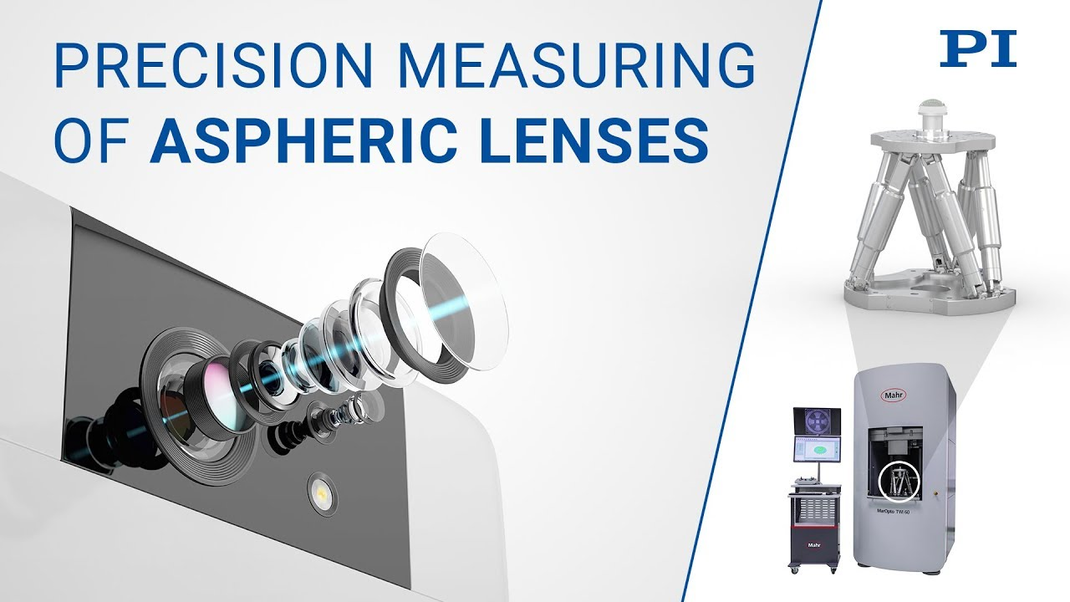Hexapods Help to Improve Precision and Speed in the Analysis of Aspherical Lenses
Aspherical lenses have rotationally symmetrical optics around the optical axis, whose radius of curvature changes radially with the distance from the center. This allows optical systems to achieve high image quality, whereby the number of elements required decreases and that saves on both costs and weight. However, for manufacturers, testing the aspheric shape accuracy, which means the quality of these types of lenses, is a considerable challenge: It requires measuring the tiniest deviations in shape in the nanometer range while making short measuring and setup times possible.
New Approach: Tilted Wavefront Technology
For this reason, the metrology company >> Mahr developed a new instrument for precise, fast, flexible measuring of different aspheres directly on the production line, without CGH, classical stitching, or tactile contacting. In contrast to existing systems that need several minutes to do the measuring, this tilted wavefront interferometer needs only 20 to 30 seconds to measure the entire surface. The next test object can be already measured while the previous one is being evaluated. The design of the interferometer allows measuring of individual surface shapes with high lateral resolution and measuring uncertainties under 50 nm.
The interferometer needs to be referenced and calibrated just like every other measuring device. For this purpose, a sphere manufactured according to highly accurate and known geometrical specifications is moved to various positions in the measuring volume. Since lateral positional errors of the calibration sphere affect the correction algorithm, the calibration sphere must be positioned precisely in space and its position must be kept stable during the measurement. This calibration process should cover the complete measurement volume and is therefore performed at many different positions.
Positioning of Calibration Sphere and Test Object in Several Degrees of Freedom
In order to meet the high demands on the positioning task in the interferometer, PI supports Mahr with six-axis parallel kinematic hexapods. They are used to precisely position the calibration sphere and the test object in several degrees of freedom and therefore to enable the improvement of optical analysis of shape accuracy.


